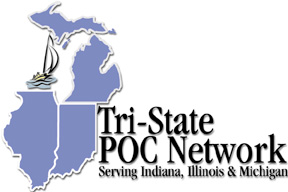| Emergency
Department Rapid Triage: Substance Abuse and the ED Patient
Hemostasis/Coag
Cascade history of whole blood clotting
Method
Validation Studies
A
History of CLIA and Changes in CLIA ’88
Important
Business Note
The
Next Tri-State Meeting |
The
first meeting in 2003 of the Tri-State POC Network serving
Illinois, Indiana and Michigan took place at the Radisson Hotel
in Merrillville, Indiana on Wednesday, April 2, 2003 from 8:00
AM to 3:00 PM. The
meeting was attended by 45 registered healthcare professionals
as well as representatives from the program sponsors and
vendors: Biosite, Fisher, Medtronic.
The meeting
commenced with the introduction of the core group and opening
remarks by Darlene Sobucki, founder of the Tri-State POC
Network. Members of
the core group include: Wendy Denk, Ingalls Hospital, Harvey,
IL; Gil Salas, Univ of Illinois – Chicago, Chicago, IL;
Darlene Sobucki, Advocate Trinity – Chicago and Advocate South
Suburban, Hazel Crest, IL.
“Emergency
Department Rapid Triage:
Substance Abuse and the ED Patient”
The first
presenter for the day was Nancy Seymour, RN, Clinical Nurse
Consultant for Biosite, Inc.
Nancy’s presentation, “Emergency Department Rapid
Triage: Substance Abuse and the ED Patient”, encompassed a
discussion of the Biosite Triage device, guidelines for drug
screening as a POCT in the ED, drug statistics and an overview
of drug pharmacology. Nancy
described patient presentations that may be related to substance
abuse (trauma, chest pain, cardiac instability, seizures,
respiratory difficulties, delirium, coma) and the need to
determine quickly the source of the presentation.
Back
to top
Hemostasis/Coag
Cascade history
of whole blood clotting
Marsha
Cusulos, Medtronic Hemotec ACT testing, presented a review of the
Hemostasis/Coag Cascade history of whole blood clotting as well as
a description of ACT technology (real time clot detection,
algorithm based on equivalency to celite ACT and synthetic
substrate reaction). She
further discussed the line of Hemachron devices (ACT II, I-Stat,
IL GEM PCL, ACT Plus, Jr. Signature) and where the devices are
being used (High Range in Cardiac OR, Cath Lab, Interventional
Radiology; Low Range in ICU and ICCU).
She also introduced the Hepcon HMS Plus, a full heparin
management system for the Cardiac OR.
Back
to top
“Method
Validation Studies”
Following
lunch, we listened to Susan Ramsey’s presentation “Method
Validation Studies” which included the when to do, why we do and
how to do method validations.
She described the components of the method validation
studies: precision studies, calibration verification/linearity
studies, accuracy studies and ease of use studies.
She said materials used for Calibration
Verification/Linearity testing must be “matrix appropriate”
and must cover a broad range for the system AMR and that CAP
linearity products are not true targets for calibration
verification. There
was group discussion on the CAP ruling on Calibration Verification
and AMR as the terminology continues to baffle and confuse
everyone as well as a discussion about instrument-to-instrument
comparability testing.
Susan
also provided regulatory guidelines for method validation: CAP
General Checklist (Gen.42020); CAP Point of Care Checklist
(POC.07900, .08500 and .08600); JCAHO (QC.1.2); and NCCLS –
C30A-2 (Item 6.3.2). And
to answer the question: what goes into a POC instrument result?
The variables that effect POC system performance include: POC
system instruments and reagents, operators, method integrity,
samples, comparative reference systems, environment and patient
physiology.
Back
to top
A
History of CLIA and Changes in CLIA ’88
Our
final speaker, William C. Garrett, from the IDPH, provided a
history of CLIA, the changes in CLIA ’88, and the number of labs
in the State of Illinois (7000) and the number of tests in the
Waived category (>180). Most
of the changes affect who can be Director and that the PPM now
includes home nurse practitioners.
As time was short, Mr. Garrett opened the floor for
questions/discussions (Reapply for CLIA certificate every 2 years
and the invoice comes 6 months before expiration date; the state
needs to be informed of any changes in testing; the shared lab
concept means if labs are under the same roof then they are under
one certificate).
Back
to top
Important
Business Note
One
piece of business to be noted: Due to the rise in costs, the
Tri-State POC Network will be imposing a $15 registration fee,
payable in cash at the door starting with the next meeting.
Back
to top
The
Next Tri-State Meeting
The
next meeting will be August 6, 2003 at the Radisson Hotel,
Merrillville, IN.
Back
to top |
